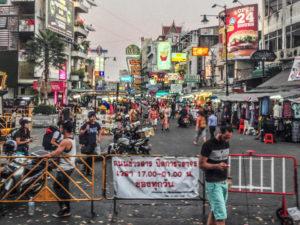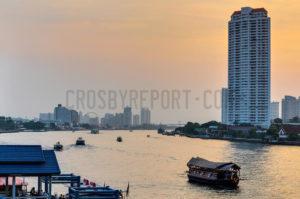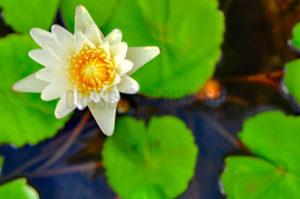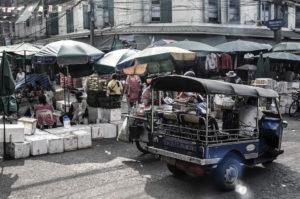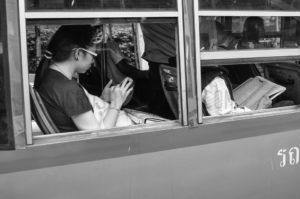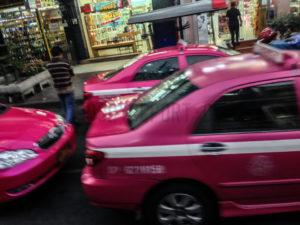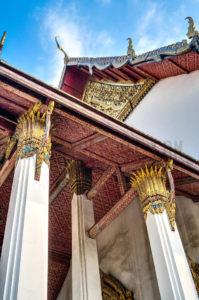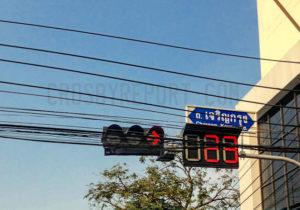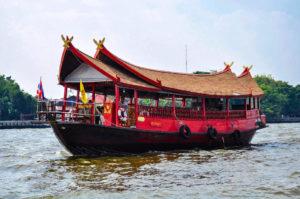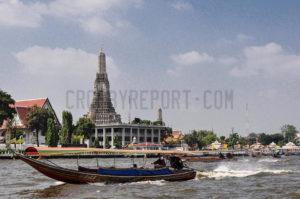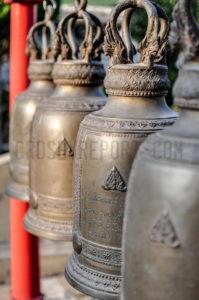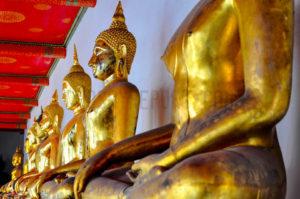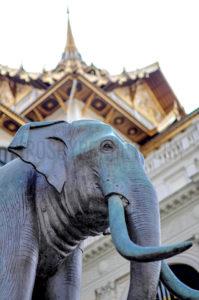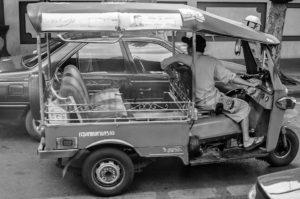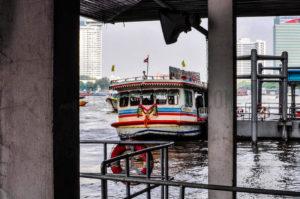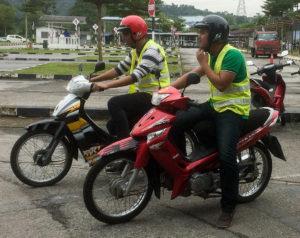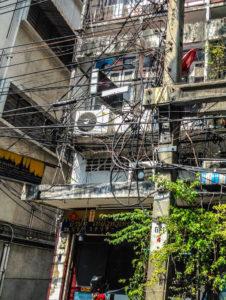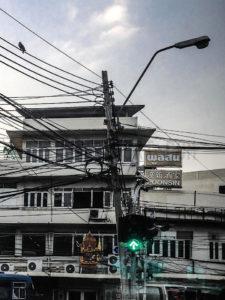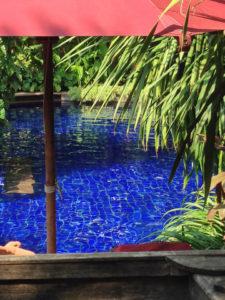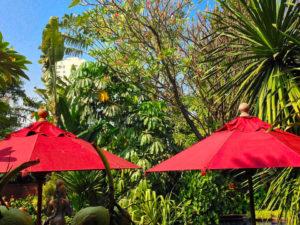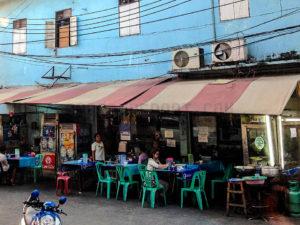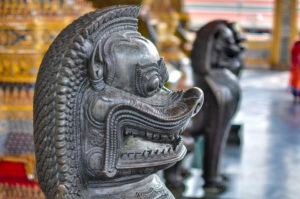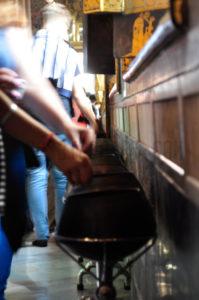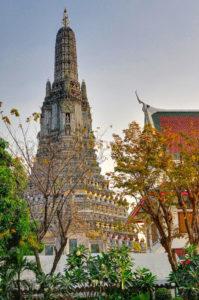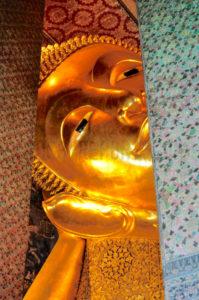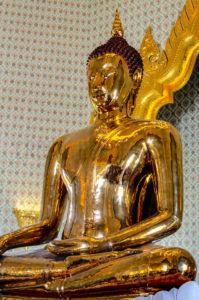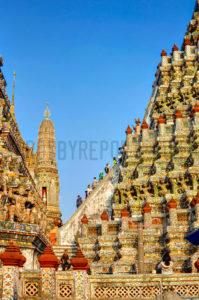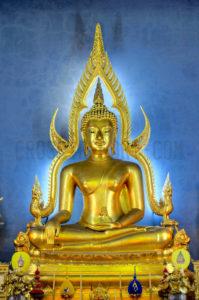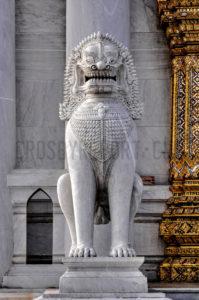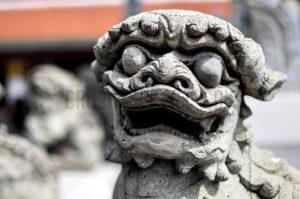My wife and I watch a lot of Hollywood movies, so we expected Bangkok Thailand to be a horribly seedy and dark underworld of illegal activity where sexual deviance and unnatural acts are performed on every corner. Instead, it was an amazing city with great food and nice people. Obviously, we were pretty disappointed.
Bangkok is Thailand's biggest city.
Right after we'd booked our flights and hotels in Thailand, we learned about a series of recent protests in Bangkok. Understandably, we were a little nervous about this development, since we had probably set off Egypt's “Arab Spring” revolution after visiting Egypt in December of 2010. (Do we know how to pick vacation spots, or what?)
We worried that our presence in Bangkok, Thailand might, once again, trigger an eruption of civil unrest and political upheaval. Yet, as of this writing (January 2, 2014), that hasn't happened. UPDATE: It did happen, and it is still happening as of 2021.
Bangkok Thailand is big, hectic, and loud.
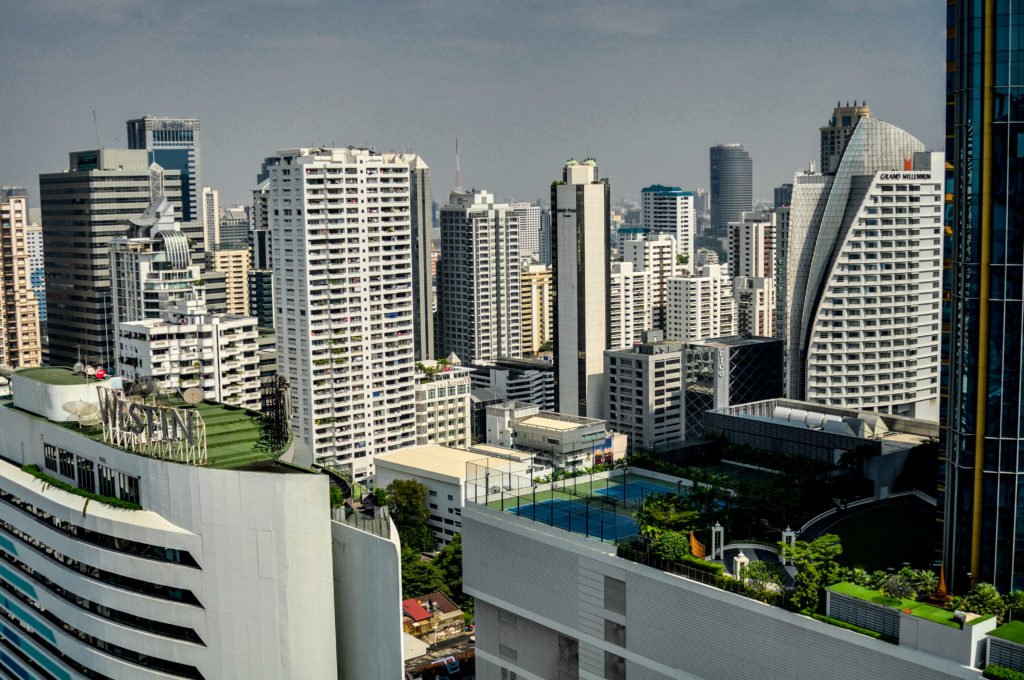
As the capital of Thailand, Bangkok is unsurprisingly huge like Cairo, Egypt with a similarly sized population of over eight million people, all of whom seem to constantly be on the road at the same time (but more about that later).
Downtown Bangkok is attractively littered with skyscrapers, people, and shopping malls. It was easy to see why the producers of “The Hangover” trilogy chose the city as its setting for the second installment—Bangkok is essentially the Las Vegas of Asia (well, assuming you don't count Macau). Though, to be honest, I'm not sure Bangkok even has gambling aside from thrill-seekers betting their lives on safely crossing the street.
Maybe Bangkok is more like the Cabo San Lucas of Asia—it's on sort of a peninsula, the weather's sunny and warm, and there are lots of activities to do as long as by activities, you mean “drink too much,” “become obnoxiously loud,” and “get thrown out of bars.”
Bangkok is a lot like a tropical paradise (with a meth problem).
Bangkok Thailand ranks among the world's top tourist destinations and for very good reasons (least of which is Thailand's international reputation for being “open-minded” about sexual mores).
Travel + Leisure—the magazine for people who love traveling almost as much as staying home—named Bangkok a “World's Best City” so many times that the city's in their Hall Of Fame. To describe the overall pace of the city, T&L uses the word “bustle,” but I would've chosen “pandemonium.” Why? Glad you asked.
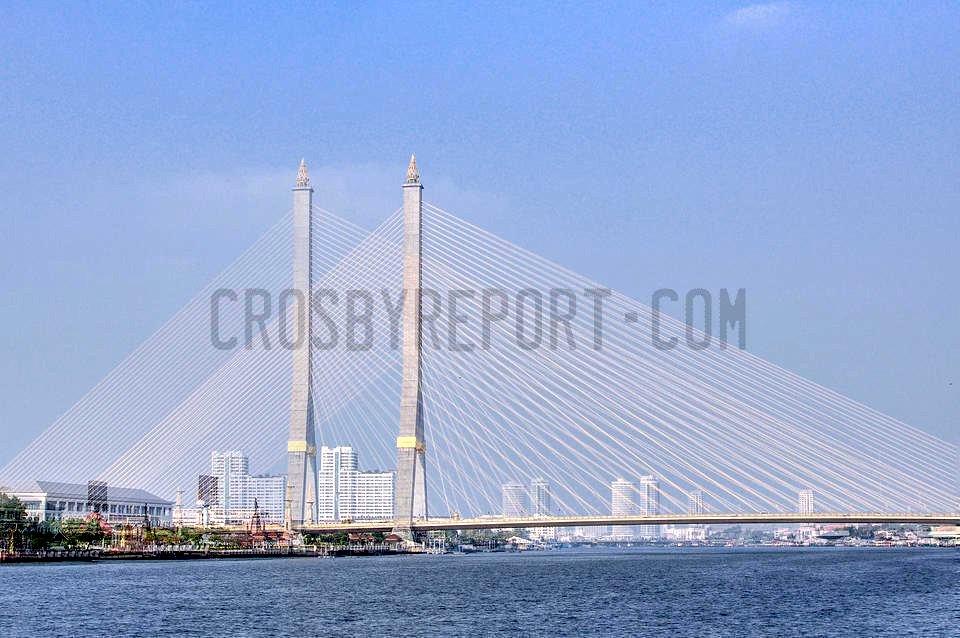
The traffic in Bangkok Thailand is effing insane.
At the best of times, driving in Bangkok is…“challenging,” yet when the city is on the verge of an uprising, driving is nigh impossible. The Bangkok protests had an immediate and protracted impact on our trip as there were major road closures and massive detours throughout the city.
Now, road closures aren't a huge inconvenience in most cities, but in Bangkok—where highway traffic moves slower than a elderly sloth with arthritis—the tiniest glitch or hiccup reeks havoc across the whole system.
If you plan on riding, renting, or—gods forbid — driving a car in Bangkok, be sure to pack a gun to shoot yourself in the head with as well. Think I'm kidding? Consider this story.
After taking a 4-hour guided city tour, we expected a twenty-minute ride back to our hotel. Instead, a single road closure backed up traffic all over the city, forcing our van to completely (and sloooowly) retrace its steps to find another route.
The new route involved driving to the river and dropping us off at a boat dock. We were then expected to take a boat ride north to the tour office, at which point another driver would shuttle us to the Metro station where we could take the subway to the nearest stop, and then walk home from there. We arrived at our hotel four hours later.
Here's why Bangkok traffic is effing insane.
Without a doubt, Bangkok Thailand's traffic is the worst we've ever seen anywhere in the world (and we've been to Cairo where it's completely out of control). In fact, traffic in Bangkok is so atrocious, that it barely qualifies as traffic at all. Traffic implies some kind of forward movement, and on Bangkok's three-lane parking lots, there's no movement to be had. Traffic doesn't flow in Bangkok, it glaciates.
The culprit could be their liberal use of 3-lane, one-way boulevards. While somewhat attractive, they are traffic ugly.
In order to travel in one direction, you must go in the opposite direction and then double back, not surprisingly doubling the length of your already painfully slow trip (and doubling the cab's meter price, too).
We frequently drove past the exact same scenery twice because we always seemed to hail cabs headed in the wrong direction.
Or maybe it's because of the world's longest traffic lights.
To make matters worse (if that's even possible), getting through Bangkok's intersections take forever. Luckily, the traffic lights have timers that count down—to the second—when the light will change. Now, on the surface, this is a truly good idea because you know exactly when the light will change. In practice, however, it's an instrument of torture since many of the timers count down from 200 seconds.
I'll wait a moment for that to sink in.
Two-hundred seconds is over three minutes. Yes, THREE MINUTES! And that's only for ONE direction. Arrive at the wrong moment, and you could be sitting at a light for nine f@#$%$ing minutes!
Clearly, car travel is to be avoided at all cost. No, seriously.
While riding in a cab is an exercise in anger management, getting a cab in Bangkok Thailand is an exercise in futility. We learned this one fine morning, when we awoke to find that the subway had “broken down.” Not interesting in pressing for more of an explanation, we tried to hail a cab from our hotel.
Now, in most countries, cabs line up at all hours outside hotels for the chance to fleece …I mean, transport foreigner tourists around town. But not in Bangkok Thailand, apparently, because none ever came by.
We waited so long for a cab that, in the meantime, the city fixed the subway. That's right, government workers—people with no incentive to be speedy—FIXED a subway in less time than it took us to find a cab. Amazing.
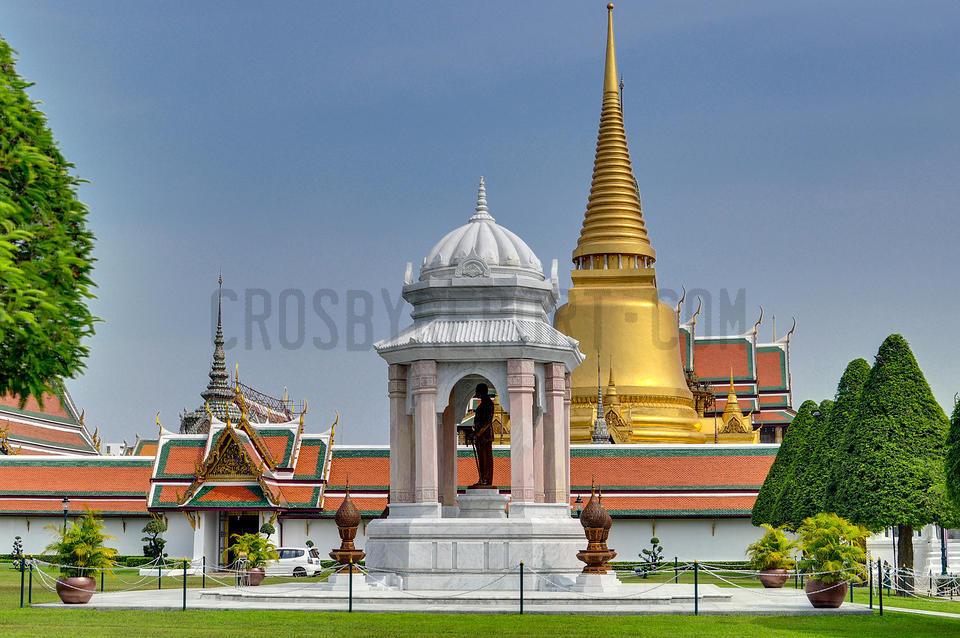
Mass transit is the only way to go, anywhere, in Bangkok Thailand.
To cut down on road usage (too late!), the city of Bangkok built three rapid transit systems: The BTS SkyTrain, an above-ground, monorail type thing; the underground MRT, a typical underground subway type thing; and the Airport Rail Link which…um, we never found.
Unlike the city's taxi cabs, the BTS SkyTrain is clean and efficient with an air-conditioning system that was, judging from its effectiveness, nuclear-powered evidently.
Stepping onto the BTS (or the MRT, for that matter) was like stepping into the frozen Heart of the Island from the TV series “LOST.” Outside, the weather was a delightfully humid 85ºF while inside it was freaking Verkhoyansk (ugh, just Google it). Not surprisingly, both transit systems were perpetually crowded because, compared to driving, it was by far the faster option.
The SkyTrain ticketing process could be better, though. Here's roughly how it works: You go to the ticket kiosk and tell the agent in the booth where you want to go. They quote you an amount, and you pay them.
They then hand you about 42 random coins to put into a machine behind you—because that's the machine that actually dispenses you the ticket. Wait, what…? Yeah, the mass transit ticketing process is hardly intuitive—and reeks of bureaucratic meddling—but after driving on Bangkok streets, you're powerfully motivated to figure it out.
Mass transit is for the masses, not tourists.
For reasons we couldn't fathom, the BTS/MTR trains won't take you anywhere near the touristy parts of Bangkok Thailand. Most of the sights the average tourist wants to see in Bangkok—temples, hookers, and whatnot—require some additional form of transportation.
Sure, being sardined into a subway car and freezing your cojones off was always preferable to sweating them off in an overheated and motionless taxi, yet for a quintessentially Thai experience, there were other less conventional transit alternatives, too.
One method of getting around town that we opted not to choose was riding an elephant. Not because we're opposed to the mistreatment of animals (which we are), nor because tourists occasionally die riding them, but because I'd already done it years ago at a Renaissance Faire (hey, don't judge me), and I still have the rash.
WTF is a tuk-tuk?
The tuk-tuk (pronounced “tuk-tuk”) isn't a transit option that you voluntarily choose (unless you're James Blunt), it's one you end up in when you finally give up trying to hail a cab. This open-air “vehicle” seems harmless enough, but it has a few downsides worth mentioning if you're trying to get around Bangkok Thailand.
First, you can't roll up any windows—it has none—so you spend your entire trip breathing the toxic fumes pumped out by all of Bangkok's two-stroke, emission-belching motorcycles and automobiles.
Another downside is the vehicle's ride quality—calling it “harsh” implies that it could somehow be rougher, and it couldn't. There's no suspension to speak of, and you're sitting on metal seats so, you know…ouch.
Last, but not least, there's the whole “involuntary detour” scam. Many tuk-tuk driver's get paid extra to take you to stores you probably wouldn't ordinarily visit given the choice—touristy shops where hawkers try to hard-sell you stuff. We got off easy, as our very pleasant driver took us to an “overpriced” bespoke clothing store where I proceeded to buy two custom-tailored suits and shirts that I didn't really need (but that are still the best-fitting suits I own).
If you have trouble saying no to salespeople, avoid the tuk-tuks. Yet, if mass transit doesn't go where you want to go, you have one last option.
Try riding on the back of a stranger's motorbike.
To combat the constant ‘go-nowhereness' of traffic, Bangkok Thailand has empowered a fleet of purple (or was it pink?) “motorcycle taxis” to transport people with a death-wish around town.
It works like this: You raise your arm, a motorcycle pulls up, you sit on the back of said motorcycle, wrap your arms around a total stranger, and hold on for dear life. We didn't avail ourselves of this seemingly sketchy option, so we can't say if it beats regular cabs (but it kinda has to). We ultimately found that the best solution was to take mass transit as far as possible and then—and only then—grab a cab, bus, or walk to your final destination.
The industrial beauty of power lines in Bangkok Thailand.
As my wife can attest, I have an odd fascination with the look of power lines and electric transfer stations—I like the strong, graphic lines and shapes that these Industrial Age structures create. Yet, for reasons not entirely clear to me, Bangkok Thailand's power lines—instead of being buried underground like those of most American cities—are strung across telephone poles, out in public, where everyone can see them (and not everyone is as tolerant of the aesthetic as I am).
Now, granted, their above-ground approach does reduce the odds of people accidentally digging up a live power cable and blacking out the entire city. But it increases the odds of people splicing into those wires and stealing electricity like it was cable TV. Oh, there's also the danger of being electrocuted during their frequent tropical lightning storms.
Stringing power lines above-ground would make sense if there was constant flooding in Bangkok (which apparently there is), but you'd think the city would at least try to hide them somehow. They could put them all in a bright pink tube (the Thai love pink for some reason), wrap them in flowers, or disguise them as climbing vines. (Note to self: Call government of Thailand.)
Bangkok is, nonetheless, a tropical paradise.
Like any population-choked mega-city, Bangkok has its share of problems, but the city's not without its charms. The climate is a sublime, subtropical bath of sun-drenched serenity and womb-like warmth.
The frenzy and chaos of the city are nicely counter-balanced by humidity that wraps you up like a blanket and softly whispers, “Hey, buddy, what's the rush?” in your ear like a lover with a weird blanket/confinement fetish.
Much of the city's charm, however, comes from the people of Bangkok themselves—they are ridiculously friendly. And not in that fake way where they smile to your face and then stab you in the back (metaphorically, I mean).
No, the citizens of Bangkok were earnest smilers. Heck, even the scammers were pleasant! We got fleeced by a few con-artists, but we just let them because they were so nice about it. (When the exchange rate is 30:1, it's hard to get very upset about getting ripped off a little). But what made Bangkok a paradise was the food.
Bangkok has a surprising amount of Thai restaurants.
Say what you will about their infrastructure, but there's no denying that the Thai can freaking cook. Unlike most fancy European countries, where you sit down to eat a fine meal, Bangkok serves much of its best food while patrons are standing up—on the damn sidewalk. Most of it was spicy, but all of it tasted smoky thanks to airborne pollutants from the passing traffic. Mmmm!
The kind of food carts that serve hot dogs in America dish out amazingly tasty Thai cuisine in Bangkok. And it's happily some of the cheapest food, as well.
Wherever you go, there are food-cart vendors making everything from fried pork balls to chicken satay to…well, a bunch of stuff neither of us could identify (though Amy said they were delicious, and thought they were maybe squid or possibly unicorn).
But not all the best food in Bangkok came from food-cart vendors. Some of it was served inside small, make-shift family restaurants. You can tell the family restaurants from the chain restaurant by the walls—if the restaurant has walls, it's almost certainly a chain.
Okay, enough dilly-dallying. Let's talk temples.
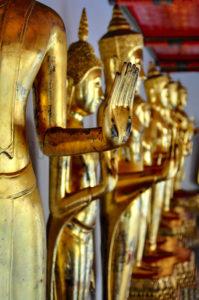
We hadn't come to Bangkok Thailand just to eat unidentifiable food and sit by our hotel pool (which wasn't a bad Plan B). We came to experience the Thai culture a bit, and that meant visiting Buddhist Temples.
We took that BTS to the river where we expected to take a boat across to see the Grand Palace. Sadly, this was the time when we got hoodwinked by a “friendly local” who informed us that the Palace was closed for a holiday—spoiler: it wasn't. (Remember when I told you about this con earlier? Come on, pay attention!)
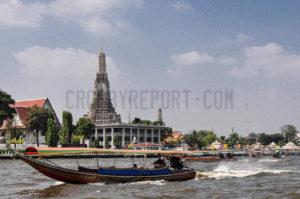
With the kindest, most smilingest face, our new friend “helpfully” directed us instead to a tuk-tuk driver who took us to Wat Benchamabophit (or the “Marble Buddha,” and Wat Arun (the Temple of Dawn). Note: If you get to see these two temples, then congratulations! You're probably being scammed, too! (Though to be honest, it's a pretty lame scam. Worse case scenario, they take you to a few tourist traps. Oh, the horror.)
Over the next few days, we visited the Emerald Buddha which was nice and greenish, but no big deal if you've seen some of the other Buddhist temples. The crazy-huge Wat Pho (or Reclining Buddha), however, is definitely a “must-see.”
Sizing in at 15-meters high and 43-meters long, the reclining Buddha is a massive gold figure seemingly posing for the swimsuit issue of Buddha Illustrated magazine. If you want to take a photo, bring a wide-angle lens. And if you want to keep that lens, hold on tight—the area is popular with pick-pockets.
Damn, Bangkok Thailand has a lot of temples.
After a few days of visiting Buddhist temples, we realized that most of them pretty much look the same—inside some very serene walled grounds, there's typically a lot of topiary work and spired roofs that look like they were designed by someone hopped up on “the opium.”
Inside each temple, you'll find a Buddha of some sort, frequently a gold one, just sort of chilling out in repose. Maybe with one hand extended, maybe one sitting cross-legged, but always very peaceful and relaxing. In other words, the polar opposite of the demonic torture scenes you'll find depicted in most Catholic churches.
Buddhist temples lack the foreboding, dread, and outright horror of your average Catholic church. You almost feel like you're visiting a museum. You know you should be quiet, but you never feel judged for your human frailties or eternally damned for minor mistakes. It's a refreshing change of pace, and I hope it catches on with the Catholics and other cults.
Wait, how did I not know there were hookers..?!
Our hotel was located in the Sukhumvit area of Bangkok which is near a lot of shopping malls, but sadly nowhere near any of the sights most tourists would want to see (that stuff is all over by the Chao Phraya River).
We were a bit surprised because we were told that this neighborhood was “popular with tourists.”
Apparently, the reason for the area's popularity is prostitutes. We eventually learned that Sukhumvit was crawling with ladies of the evening, but we only stumbled upon them while walking home from dinner one night.
The restaurant was only 300 yards from our hotel, yet the cab ride there took—without exaggeration—forty-five f#$%&ing minutes! After dinner, we walked back to our hotel in just 10 minutes. On the way, we took a detour through an alleyway that was blocked to traffic but choked with people and aglow with lighted neon signs.
Both sides of the alley were lined with drinking establishments and youngish girls who looked like a street team for Axe Body Wash. Each bar had its own theme and staged girls outside dressed in complementary—yet highly inappropriate—outfits for girls that young.
Walking hand-in-hand with my wife, the ladies avoided us like we had the Bird Flu, but if you were an unattractive, white male with a beer gut and sexual inadequacy issues, the Sukhumvit just might be nirvana.
Overall, here's what I thought about Bangkok Thailand.
To be honest, I didn't really love Bangkok, but I'm pretty sure we just did it wrong. I think we were expecting something entirely different (something between Singapore and Bali).
So we weren't prepared for, and couldn't really take advantage of, all that the city had to offer. In hindsight, we probably should've just done what a friend of mine later recommended: “Spend one or two days in Bangkok, then fly to Phuket to spend time on the islands off the coast.”
If you do spend time in Bangkok, don't try to do too much, for two reasons: 1.) You'll never be able to see it all in one trip anyway. And 2.) The #@$!%!ing traffic won't let you.
Our trip continued to the beaches of Phuket, Thailand »

